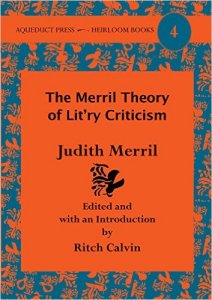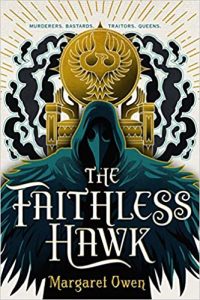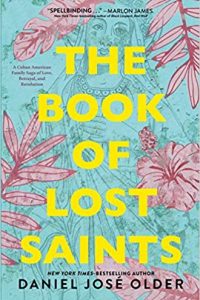Russell Letson reviews Judith Merril
The Merril Theory of Lit’ry Criticism: Judith Merril’s Nonfiction, Judith Merril (Aqueduct Press 978-1-61976-093-6, $22.00, 348pp, tp) March 2016.
 I am a review junkie. As a high-school student, I loved The Saturday Review, and when I started reading SF magazines, I always turned to the review sections first, not so much for a buyer’s guide (I was omnivorous anyway) as for the conversation about SF. It was from these review columns that I got my first taste of critical discourse: from Alfred Bester, Algis Budrys, Avram Davidson, Floyd C. Gale, Damon Knight, P. Schuyler Miller, Joanna Russ, and (‘‘by a commodius vicus of recirculation’’) the subject of this review, Judith Merril.
I am a review junkie. As a high-school student, I loved The Saturday Review, and when I started reading SF magazines, I always turned to the review sections first, not so much for a buyer’s guide (I was omnivorous anyway) as for the conversation about SF. It was from these review columns that I got my first taste of critical discourse: from Alfred Bester, Algis Budrys, Avram Davidson, Floyd C. Gale, Damon Knight, P. Schuyler Miller, Joanna Russ, and (‘‘by a commodius vicus of recirculation’’) the subject of this review, Judith Merril.
Between 1956 and 1969, Merril produced a body of commentary that explored and explained the field of science fiction and fantasy even as it was changing around her and her readers. She was not an academic critic but an anthologist, reviewer, and working SF writer. She was also a long-time member of the SF subculture from the 1940s onward: a member of the Futurians and the Hydra Club and a co-founder of the Milford Writers’ Conference. Her critical work was more practical than theoretical, but nonetheless systematic and precise. She was a commentator who was also a practitioner, an analyst who was also a fan, with a broad-church sensibility that could not disentangle SF from the cultures that surrounded it.
In The Merril Theory of Lit’ry Criticism, editor Ritch Calvin has gathered and condensed thirteen years’ worth of material into a single volume that includes the introductions and ‘‘summation’’ essays from her long-running series of annual ‘‘Best SF’’ anthologies; book reviews for The Magazine of Fantasy & Science Fiction; and a single long, reflective essay written for the Science Fiction Research Association’s journal Extrapolation. The chronological arrangement allows us to follow Merril as she explores the shape and extent of the modern fantastic, locates particular writers and works in that geography, and develops an aesthetic and historical-social framework for making judgments. (The full texts of all the items are available as an e-book, which is nearly twice as long as the print version. Omitted material consists mainly of individual story introductions from the annual anthologies.)
I remember reading each of the post-1960 items in this volume as they came out, and backtracking to the earlier ‘‘Year’s Best’’ volumes to fill out the set. (All the anthologies are on a shelf behind me as I write, though my runs of F&SF and Extrapolation are down in the basement.) Here are contemporaneous responses to work by J. G. Ballard, William S. Burroughs, Samuel R. Delany, Thomas Disch, Daniel Keyes, R. A. Lafferty, Richard McKenna, I. B. Singer, Kurt Vonnegut, and Roger Zelazny, among others. At the same time, Merril was developing a critical context that included the business side of writing and publishing, and the general literary and cultural currents that shaped the fiction she followed. On re-reading everything at once a half-century later, I recognize how much they formed my baby-critic thinking about how SF fits into the rest of literature.
As I composed this column, I kept trying to extract and synthesize an overview of Merril’s Lit’ry Theory from the range of documents but then realized that Ritch Calvin had already performed that service in his excellent ‘‘Introduction: The SF Aesthetics of Judith Merril’’. I cannot, however, resist pointing out a few things that struck me as particularly noteworthy. The volume’s title is taken from Merril’s own mocking characterization (found in the e-book version of the 1957 S-F: The Year’s Greatest volume) of her method of assembling an anthology: ‘‘When I find a story I like, I mark it for re-reading. (The Merril Theory of Lit’ry Criticism is simple: any story I can’t enjoy as much the second – or fourth – time as the first does not deserve to be printed more than once.)’’
Despite that aw-shucks-ish pragmatic take on the critical act of selection, Merril was already looking at general-cultural and publishing-environmental factors affecting the genre. For example, the fifth annual Year’s Best S-F (1960) includes an early recognition of the importance of the publishing environment, following from state-of-the-market observations in previous volumes (number of magazines, books, etc. published). This prefigures Algis Budrys’s 1983 monograph Non-literary Influences on Science Fiction and represents an until-then (and perhaps still) underappreciated part of literary studies. She also traced the growing acceptance of science fiction and what might be called a science-fictional sensibility, as SF-related ideas and themes filtered into the culture at large. In the ‘‘Summation’’ for the tenth Year’s Best volume (1965), she writes,
I have been pointing out the meeting places on the literary scene where the once-sequestered science-fictionist now mingles freely with the journalist, the experimentalist, the poet and philosopher and an occasional visitor from the academic or international world of letters.
In that same volume she comments on, quotes, cites, or name-checks J. G. Ballard, Max Beerbohm, Reginald Bretnor, John Brunner, Algis Budrys, David R. Bunch, William Burroughs, Philip K. Dick, Thomas Disch, Carol Emshwiller, James T. Farrell, John Gunther, Donald Hall, Fred Hoyle, Frederik Pohl, Theodore Sturgeon, Kurt Vonnegut…. Well, you get the idea. A year later she published that long (15,000 word) two-part essay, ‘‘What Do You Mean Science? Fiction?’’ that brings together the historical, evaluative, and socioeconomic threads that make up her actual Lit’ry Theory – a document that I think SF scholars should still read with close attention.
The 1968 Democratic Convention marked a turning point in Merril’s life, documented in the remarkable opening paragraphs of the January 1969 F&SF column. She would write one more review piece for the magazine, then a long appreciation for the special Fritz Leiber issue in July, and then relocate to Canada.
So, an executive summary: The Merril Theory of Lit’ry Criticism reveals a sharp eye (for detail and nuance), a sharp mind (for analytical insights), and a sharp tongue (because Voice is crucial to these pieces). Her observations and evaluations stand up remarkably well five and six decades on, and the Theory that evolves and emerges across those years is at least as useful as any enshrined in a university-press volume. This book reminds me of what I still want to be when I grow up: Judith Merril.






http://www.galaxysedge.com/mmal.htm
This book probably inspired Barry Malzberg’s latest essay in which he discourses on what he now sees as Merril’s “unapologetic campaign to destroy science fiction.”
Curiously, William Tenn,a friend of Merril, would agree him.